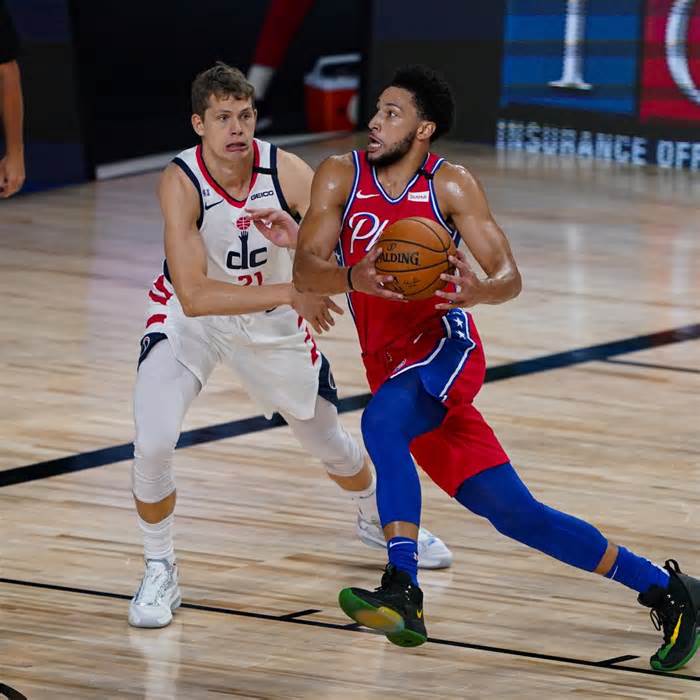The National Hockey League is restarting its pandemic-era 2020 season with Grammy winner Michael Buble singing the national anthem for the opening New York Rangers vs Carolina Hurricanes match-up on Saturday.
But beyond that, NBC, NBCSN and the NHL Network viewers stateside and Sportsnet and CBC audiences in Canada will see games unlike any ever broadcast as the pro hockey league looks to salvage a season ravaged by the COVID-19 public health crisis.
They’ll be no cheering or groaning fans in packed stands as goals are scored, and team players over the next 60 days will be sequestered in so-called “bubble” hotels and arenas in Toronto and Edmonton as safety precautions. And as the NHL’s chief content officer Steve Mayer tells THR, the pro league was never going to drop a hockey puck in silent, cold arenas.
That’s a major challenge as the rumble and booming roar of fans rallying behind their teams during the Stanley Cup playoffs each year is a big part of the energy and buzz that crosses screens to connect with TV audiences. Nor will the NHL disguise empty seating in Toronto’s Scotiabank and Edmonton’s Rogers Place arenas with virtual fan walls or cardboard cutouts.
“With all due respect to my Korean friends, there’s no way we were going to put stuffed animals in seats,” Mayer says of Korean baseball filling empty stands with plush toys. The NHL, ending a four month pandemic hiatus, has instead gone to the Hollywood playbook and created giant made-for-TV sets to bring fans in over 160 countries closer to the action.
At games played behind closed doors, EA Sports will pump in crowd noise and the lower levels of both arenas will be surrounded by mega graphic panels, six LED screens rising 30 feet in the air, and stages. “We want to give them a show,” Mayer said of team fans watching from home, surrounded by friends and family or connected to fellow fans via social media, Zoom and other platforms.
On those giant arena video screens, viewers will see zoomed-in video, game replays, taped pieces about their NHL heroes, team logos and graphics from Undefined Creative of superfans from the respective teams cheering at home. “We brought in a Hollywood award show lighting director. We brought in set design from entertainment and Broadway. We looked at this as a made-for-television event,” Mayer insists.
Besides additional cameras for new angles on the game action, the bubble broadcasts will include piped-in team cheers, songs and goal horns from each NHL teams as audio. And rink-level microphones will enhance the natural sounds of the game — the stopping of metal skates on the ice, slap shots and players colliding on the boards.
The NHL telecasts will be on a slight tape delay, however, to edit out colorful language from players on the ice or team benches, which is very much a part of the traditional game. “We know we have kids and family watching, that’s important for the league,” Mayer says.
Returning this weekend to launch the NHL playoffs in hub cities is critical for the NHL as, like other pro leagues, it stood to lose millions if it had to go without TV revenue tied to postseason play.
Mayer as a sports fan has watched European soccer and now Major League Baseball and the NBA stateside restart their 2020 seasons amid the pandemic, and insists the NHL didn’t deliberately take a different tack with its splashy TV broadcasts that resemble shiny floor talent shows.
“It’s amazing that sports is back and we weren’t trying to be different, by any means. We just felt this was the right approach for us,” he says. Complicating the preparations for the NHL’s 2020 season restart is everything had to be done on the fly.
By early May, the NHL knew a season relaunch was in the works, but the league didn’t know in which hub cities. The NHL eyed ten cities across North America as possible tournament venues, and efforts across North America to tackle the coronavirus spread.
“When you saw what was happening in areas of the United States, and what was happening in Canada, it was a pretty easy decision. We went to where COVID was not a huge problem,” Mayer said of choosing Toronto and Edmonton as hub cities. Then the pro league settled on a strict cordon around all NHL team players, coaches and staff, which calls for everyone to never emerge from hotels and rinks hidden behind cement blocks and black curtains to interact with the outside world.
“There’s no messing around. Our protocols are so strong and stringent. I’m wearing a mask. Everyone’s wearing a mask and social distancing. Everywhere,” Mayer explains. And to create the made-for-TV events, the NHL decided against weeks of phone calls and design drawings with its set builders, led by Hotopp Productions, and went quickly to 3D modelling and construction.
Beyond this weekend’s relaunch, Mayer and his team are already reimagining how they will broadcast the NHL’s most authentic TV tradition — the raising of the Stanley Cup by the playoff winning team — without screaming and applauding fans in team colors in the arena.
“We know we have to give that moment it’s due and make it special and make it unique to this year, to what we’re all going through and make it memorable because 20 years from now, everyone will talk about this period of time, this playoff, this is so different,” he insists.
Our affiliate publications

